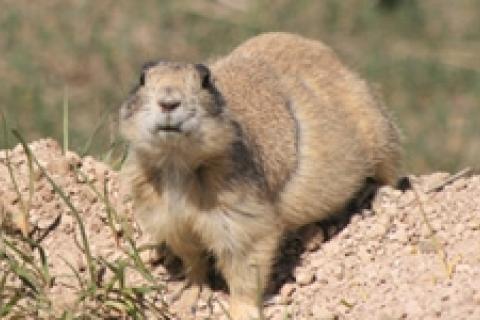
Some hunters and shooters see summer as the slow period, one where seasons are lacking and things to hunt are nonexistent. Hunters in the know, however, find the best hunting opportunities of the year with one of North America's most plentiful species — rodents — in their sights. And make that the most plentiful pest, too, when you lump in prairie dogs, ground squirrels, sage rats, groundhogs, marmots and others. If hunters of these species were absent, our nation would soon be overrun by rodents. Maybe it's time for you to join the hot summer shooting action.

And should you need more encouragement, remember that these rodents are gnawing on your wallet. For example, ground squirrels in Wyoming are gobbling up grass that was destined to become food for cattle. The grass must be replanted, and that drives up the price of a steak in your super market. And when a groundhog in Iowa gnaws away young corn plants in a sprawling farm field, you pay a higher price at the pump for gas because ethanol costs more. It's your national duty to plink pests and help keep prices in check.
Before you grab a rifle and load the truck, however, note that there are two schools of thought on how to hunt these critters: up close or at long range. Both are exciting events, and can sometimes be done at the same site.
Making the Shot With the Right Caliber

For many varmint shooters, any bullet that travels less than 200 yards is considered close. And if you want to take close shots, consider .22 and .17 calibers. The .22 Winchester Magnum and .17 Hornady Magnum Rimfire and .17 Remington Fireball are perfect pest plinking cartridges when the rodents are nearby. And the popular .22 Long Rifle cartridge can serve as a pest round for the smaller rodents on most calm days.
Tip: View Hunting Cartridge chart sizes
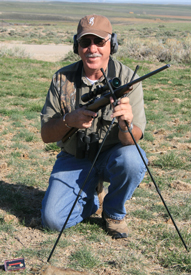
open areas and support is
absent.
Those rounds make great selections for most in-your-face ground squirrel encounters. In fact, the low recoiling rounds and lightweight rifles that shoot them often make the perfect introduction gear for kids to hunting. If you will be the hunter, however, you can match these small bore rifles with a set of shooting sticks and take a brief walk around the edge of a field where the pests live and dig.
Tip: Practice your shot before heading out to the field with varmint targets like RangeMaxx. See right away if you hit the target or not with dual-color flake-off technology. Targets designed to make the bullet holes explode with color, allowing you to see from great distances where the bullet hit.
Setting Up to Plink Pests
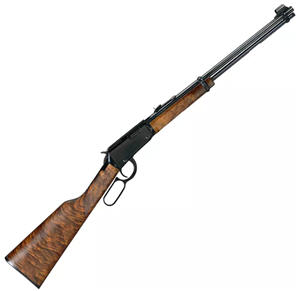
Rifle
Fresh mounds of dirt, barren ground absent of grass, and numerous tunnel openings let you know that ground squirrels and sage rats reside there. And if they are plentiful, it sometimes appears that the ground is moving as so many rats scurry from hole to hole.
Select a target and aim carefully. Should you miss, however, you can often see the dirt fly up to indicate a strike and help you adjust your next shot. Many hunters like low recoil rifles because they can observe the action.
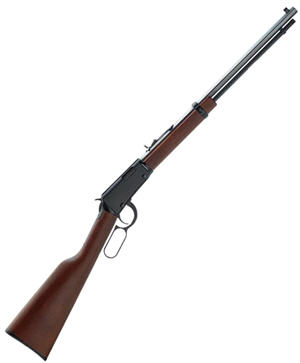
Action Rimfire Rifle
Even better news is that in the times of rising prices — or shortages — in ammunition, the smaller caliber close range .22s and .17s are generally more affordable and plentiful.
And with varmint hunters in mind, there are newer rifle models on the market to help with being quick and accurate. Browning's T-Bolt is a top contender, as is Remington's Model 597 rifle and Henry Octagon Frontier Lever-Action Rimfire. These small game rifles are sure to perform.
Tip: Small Game hunters shop Henry Firearms at Bass Pro Shops
Pest Plinking by Long Distance
For some hunters, pest plinking is a challenge about making the accurate, long-distance shot. In fact, 400- and 500-yard shots at prairie dogs and groundhogs are not uncommon. Ground squirrels, prairie dogs, groundhogs and marmots that receive hunting pressure will often disappear when they spot human activity nearby, so 200-yard-plus shots become the norm in some fields where these pests live.
This avoidance at long distances brings on the use of flat trajectory cartridges with small fast-flying bullets. While the .223 and .22-250 cartridges have been popular performers, cartridges like the .223 Winchester Super Short Magnum (WSSM), Remington's .221 Fireball and the .204 Ruger are gaining ground. These developments are the result of demand by pest plinkers for more options. If you want to watch the action, then low recoiling .223 and .204 cartridges might be your best bet. Browning, Winchester, Remington and others have also manufactured more varmint rifles that shoot these cartridges, so you'll be able to find one that meets your needs.
Click here for a larger view of the rifle caliber chart.
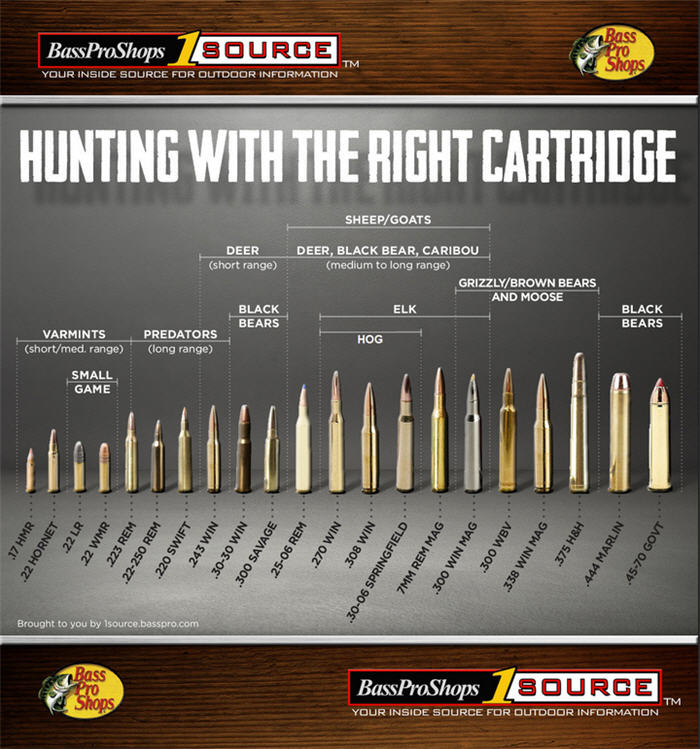

accuracy on the long-distance shots.
A rifle scope with much magnification is important in this shooting process, and thin crosshairs inside the scope will help reveal small targets at long ranges on high magnification. Magnifications in 10X, 12X, 16X and even 24X are the most popular as the object of the game is to be sniper precise at incredible distances.
A rangefinder will also help you be more precise. You'll need to study the ballistics of the cartridge you are shooting, and study the winds where you hunt. In most cases long-range pest hunting uses the buddy technique where one person spots and observes with a high-power binocular or spotting scope while the other focuses entirely on shooting and steadying the rifle. When one tires of watching or shooting, it's time to switch.

The challenge in the long-range game is often locating the pest. Ground squirrels and prairie dogs can disappear behind tall grass or down deep tunnels. Marmots are prone to lurk in the shadows under boulders and rock ledges. And leery groundhogs often rest just inside their den openings with only the top of their heads visible. You'll need to take long pauses, glass with attention to detail, and use visible terrain markers like a fence post or prominent rock to find the pest in a rifle scope.
Gear Up for the Best Plinking Experience
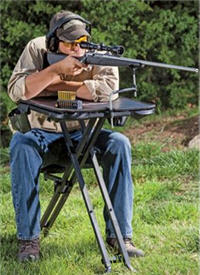
Bench Table
In addition to optics, rifles and scopes, and a rangefinder, there are other items that can help you be more accurate in the field. Most shooters find a shooting bench like the popular RangeMaxx Shooting Bench Table like the RangeMaxx is a must when shooting at fields of scurrying prairie dogs and ground squirrels. A rifle rest and some sandbags can help you become steady and accurate. There are several quality, flexible and steady portable shooting benches available on the market. And a quality rifle sling is a must-have for most hunters to carry the heavier bull-barrel rifles to the shooting site.
For hunting scenarios where you'll be on the move, as when pursuing groundhogs and marmots, shooting sticks and rests like the Cabela's Tripod Shooting Rest are the way to go. Adjustable sticks with rubber coated tops can help you secure and steady your rifle on surfaces ranging from flat rocks to sloping hillsides. Most hunters like the models that fold and fit in a rear pocket.
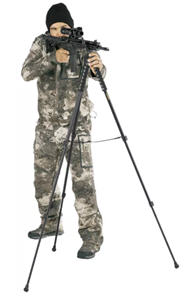
A daypack is also useful for transporting gear and ammunition, especially when you take a hike to hunt. Groundhogs are best hunted by walking ridge tops and scanning fences and fields, so your hunting gear will need to go with you. For trips to hunt pests in sunny locations like Albany, Wyoming, you may want to include sunglasses, a wide brim hat, and sunscreen in that pack. And take water to drink in most arid western states.
When hunting keen-eyed marmots and groundhogs, camouflage clothing can help you blend in and avoid being noticed. On warm summer days, however, a lightweight shirt and pants are a must to avoid overheating as you move. In many cases you can wear and use the pants with zip-off legs to be more comfortable when temperatures rise. If you'll be hunting prairie dogs and ground squirrels, however, standard every-day clothing and jeans are the norm because these rodents are more focused on finding and eating grass than watching you.
Load Up and Head Out to Hunt

and a small bore bolt-action rifle
chambered in .17HMR.
Several state game departments have guides and offer details on where to find prairie dog towns. These sites are numerous from New Mexico to northern Montana. Public shooting opportunities abound on BLM lands in many regions. And from Oregon to Wyoming and down to California, ground squirrels and sage rats are plentiful.
Along most any ridge in the Rockies where there are rocks, you'll find marmots to hunt. Groundhogs or woodchucks range from the Midwest to the Carolinas and up to Vermont. The nation has no shortage of pesky rodents, and few states place restrictions on hunting them. In most cases a small game hunting license permits your pursuit, and in some states, like Wyoming, no license is needed to hunt these pests.
With so many options to fill you rifle sights, the only pressing question becomes how much ammunition to buy or reload and take along. While a good day of hunting might burn up one to two boxes of cartridges when you chase groundhogs, a standard afternoon shooting over a sprawling prairie dog town could easily use up 500 rounds. Take as much ammunition as you can, and buy it by the case for hunting in most areas.
All of this shooting will actually help you develop better rifleman techniques, and this will help you become a better shooter and hunter in the future. This could be the difference between a miss or a kill when a buck steps before you next fall. Pest plinking is more about shooting than hunting, so use the opportunities to practice good shooting technique.
Finally, varmint and pest plinking offers one of hunting's best chances to take along a son or daughter, or wife or best friend, for a casual day afield. Many families now plan hunting vacations where rodents are the topic of attention. It's a great alternative for hunters against that other possible vacation in Florida where one large rodent with big ears gets all the attention. And plinking pests helps farmers.
- 10257 views

